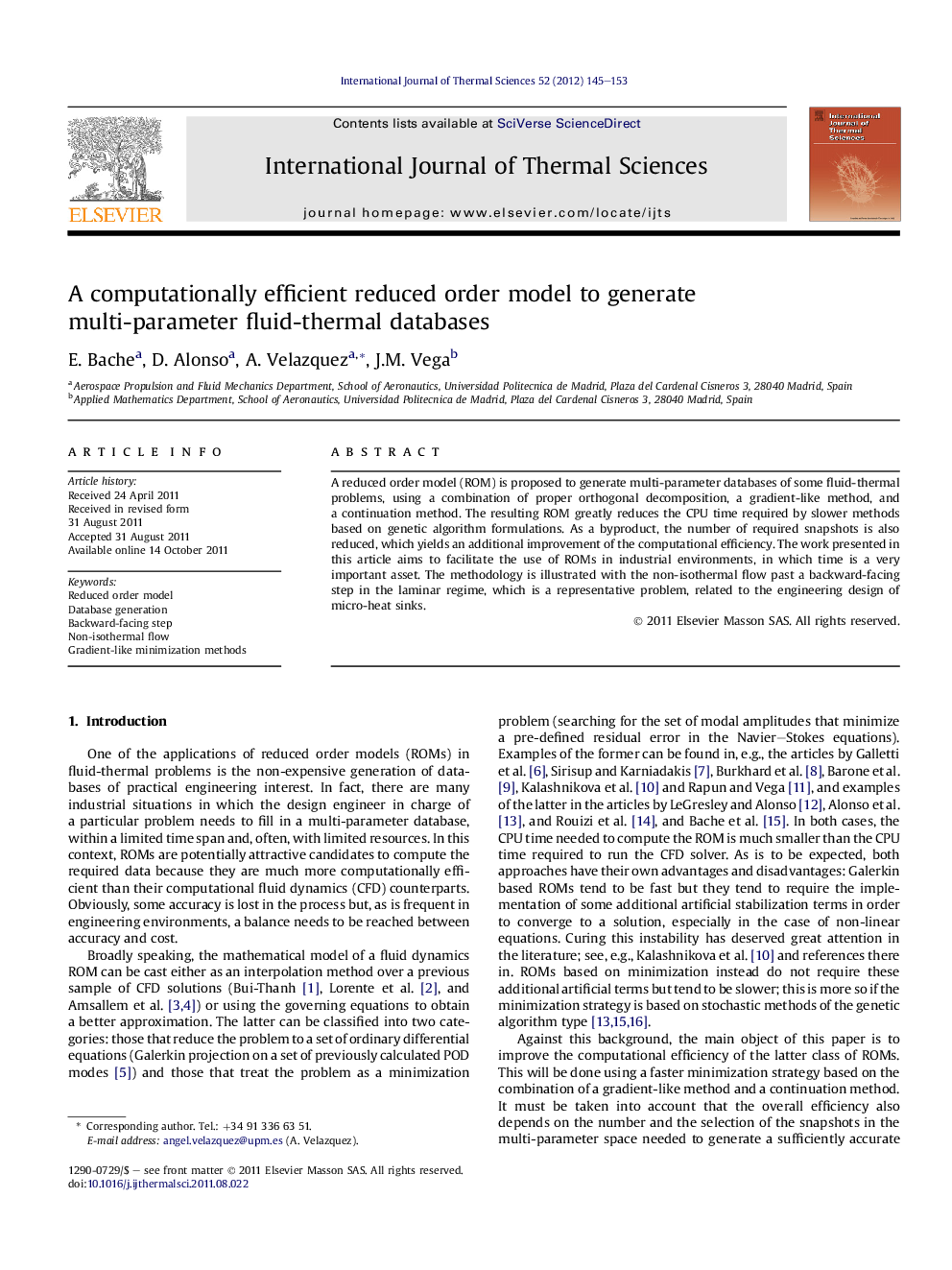| Article ID | Journal | Published Year | Pages | File Type |
|---|---|---|---|---|
| 669147 | International Journal of Thermal Sciences | 2012 | 9 Pages |
A reduced order model (ROM) is proposed to generate multi-parameter databases of some fluid-thermal problems, using a combination of proper orthogonal decomposition, a gradient-like method, and a continuation method. The resulting ROM greatly reduces the CPU time required by slower methods based on genetic algorithm formulations. As a byproduct, the number of required snapshots is also reduced, which yields an additional improvement of the computational efficiency. The work presented in this article aims to facilitate the use of ROMs in industrial environments, in which time is a very important asset. The methodology is illustrated with the non-isothermal flow past a backward-facing step in the laminar regime, which is a representative problem, related to the engineering design of micro-heat sinks.
► A computational method is presented to generate fluid-thermal databases. ► The method combines POD, gradient-like, and continuation approaches. ► The resulting reduced order model accelerates the computation of new cases. ► The method can be used to shorten design cycle time in industry.
